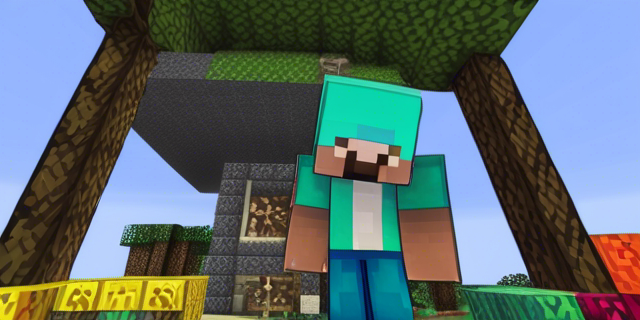“Welcome to this in-depth exploration of how Minecraft was created, one of the most popular and influential video games of all time, how Minecraft was created. This article will take you on a journey through its creation, development, and cultural impact on the gaming landscape.
Markus Persson, a Swedish programmer, created Minecraft, known for its open-ended gameplay and limitless possibilities. Inspired by games like Dwarf Fortress and Infiniminer, Persson created a game allowing players to shape and build their virtual worlds.
The development of Minecraft began in 2009, when Persson founded his independent gaming studio, Mojang. Armed with his vision and a dedicated team, Persson started working on the game, initially releasing it as an alpha version to gather feedback from a small community of players.
, it gained a cult following, with players captivated by its unique blend of creative expression, survival mechanics, and multiplayer experiences. The game’s popularity grew rapidly during its alpha and beta phases, attracting millions worldwide players.
In 2011, Minecraft officially launched, and its success was nothing short of extraordinary. It quickly became a global phenomenon, selling millions of copies and captivating players of all ages. Minecraft’s success continued to soar, fueled by its innovative gameplay mechanics and a vibrant community that embraced and contributed to its ever-expanding universe.
Over the years, Minecraft has continued to evolve and introduce major updates, adding new features, biomes, and creatures to its vast world. The game’s impact goes beyond gaming, with Minecraft influencing popular culture, inspiring countless YouTube channels, and even finding its way into movies, TV shows, and merchandise.
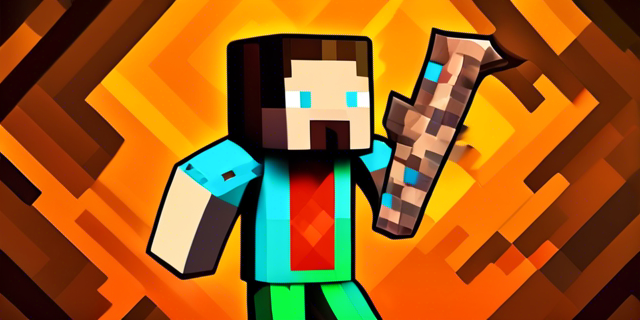
Key Takeaways:
- Minecraft was created by Markus Persson and developed by his studio, Mojang.
- The game’s alpha and beta phases played a crucial role in its success, with the active involvement of the player community.
- Minecraft’s release marked the beginning of its extraordinary popularity, selling millions of copies worldwide.
- The game’s open-world sandbox environment, crafting system, and exploration elements set it apart from other games.
- Minecraft’s enduring legacy is reflected in its active community, ongoing updates, and widespread recognition in popular culture.
The Early Years: Markus Persson and Mojang
The early years of Minecraft were marked by the incredible vision and dedication of Markus Persson, the game’s creator, and his company, Mojang. Together, they laid the foundation for one of history’s most innovative and successful games.
Markus Persson, also known as Notch, was a talented game developer passionate about creating unique and immersive experiences. In the early 2000s, Persson gained recognition for his work on various indie games, honing his skills and exploring different game mechanics.
However, it was in 2009 that Persson started working on How Minecract was created. He set out to create a game that would challenge conventional boundaries and give players the freedom to shape and explore an infinite world.
Mojang, Persson’s independent game development studio, played a crucial role in supporting the creation of Minecraft. Founded in 2010, Mojang supplied the necessary resources and expertise to turn Persson’s vision into reality.
Together, Persson and Mojang embarked on a remarkable journey, working tirelessly to refine and expand Minecraft. Players experienced deep understanding, iterations, and experimentation in the early years, revealing what made the game resonate with them.
Their dedication paid off when Minecraft was released in 2011, initially as an alpha version. The game quickly garnered widespread attention and became a phenomenon within the gaming community. Players were captivated by the game’s unique blend of creativity, exploration, and survival.
“Minecraft is about placing blocks to build anything you can imagine. At night, monsters come out; make sure to build a shelter before that happens.” – Markus Persson.
The success of Minecraft in its early years was a testament to the incredible vision and hard work of Markus Persson and the team at Mojang. Their commitment to innovation and player empowerment laid the groundwork for the game’s enduring legacy and continued success.
Key FiguresKey Facts
Markus Persson, Game developer and creator of Minecraft
Mojang Independent Game Development Studio was founded in 2010
Minecraft Release Alpha version released in 2011
Inception and Development of Minecraft
The inception of Minecraft and its subsequent development can be traced back to the creative mind of Markus Persson, a Swedish game developer. Inspired by his love for exploration and the urge to create, Persson began working on what would eventually become one of the most popular video games ever.
In the early stages of Minecraft’s development, Persson focused on the game’s core mechanics, aiming to create a unique and immersive experience for players. The initial version of Minecraft, known as “Cave Game,” featured a procedurally generated world filled with vast landscapes, underground caves, and a rudimentary crafting system.
“The idea behind Minecraft was to create a game that allowed players to explore and build in a limitless virtual world. I wanted to capture the essence of creativity and give players the freedom to shape their own adventures.” – Markus Persson.
As development progressed, Persson enlisted the help of talented individuals who shared his vision for the game. Together, they formed the independent game studio Mojang, with Persson as the lead developer.
The early versions of Minecraft captured the attention of a passionate community of players who were drawn to its open-ended gameplay and endless possibilities. Feedback from this dedicated community played a crucial role in shaping the game’s direction, with new features and improvements implemented based on their input.
Over time, Minecraft evolved from its humble beginnings into a fully-fledged sandbox game, allowing players to construct elaborate structures, mine resources, battle mobs, and embark on thrilling adventures in a world limited only by their imagination.
Minecraft stands as a testament to the power of creativity and the lasting impact of innovative game design. Its inception and development have paved the way for a new generation of sandbox games and left an indelible mark on the gaming industry.
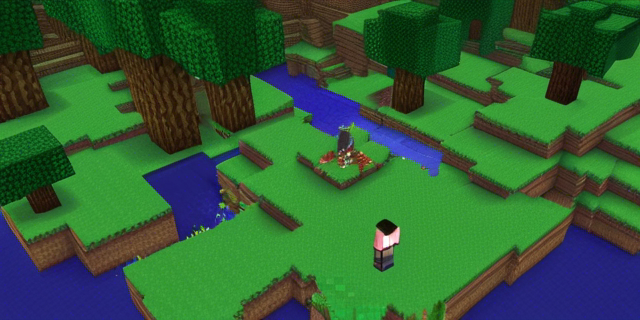
Minecraft’s Alpha and Beta Phases
During the development of Minecraft, the game went through significant phases known as the Alpha and Beta stages. These milestones played a crucial role in shaping the game and fostering a strong sense of community involvement.
In the Alpha phase, which started in June 2010, Minecraft was initially released to the public. This early version of the game allowed players to experience the game’s core mechanics and begin exploring the vast, procedurally generated worlds. While the Alpha version of Minecraft needed to be completed, it showcased the game’s potential and attracted a dedicated fanbase.
Over the Alpha phase, Minecraft underwent numerous updates, introducing new features, refining gameplay mechanics, and addressing bugs reported by the community. These updates were eagerly awaited by players, who eagerly anticipated the improvements and additions they would bring to their Minecraft experience.
The Beta phase commenced in December 2010 as the game continued to evolve. This phase marked a significant milestone in Minecraft’s development, bringing the game closer to its official release. The Beta version expanded on the foundation laid during the Alpha phase, introducing even more features, including the highly popular Creative Mode, which allowed players to create freely without the constraints of survival.
“The Alpha and Beta phases of Minecraft were fundamental in the game’s evolution. During this time, the community played a crucial role in shaping the game through their feedback and ideas, making the experience truly collaborative.” – Markus Persson, Creator of Minecraft.
Throughout the Beta phase, Minecraft garnered immense popularity and attracted an even larger player base. The engaging gameplay, combined with the ever-expanding world and the freedom to create, captivated players from all walks of life.
It’s important to note that during both the Alpha and Beta phases, Minecraft embraced an open development model. This meant that players were actively encouraged to provide feedback, report bugs, and suggest new features. This close relationship between the developers and the community fostered a sense of ownership and investment in the game’s success, ultimately contributing to the vibrant and passionate Minecraft community we see today.
Release and Immediate Success
After years of development and beta testing, Minecraft was finally released to the public on November 18, 2011. The release marked a significant milestone for the game and its creator, Markus Persson.
The launch of Minecraft was met with overwhelming success, quickly becoming one of the most popular games of its time. Within a few months, it surpassed one million copies sold and continued to gain momentum.
“Minecraft allows players to build and explore their own virtual worlds, fostering creativity, imagination, and endless possibilities. Its open-ended gameplay and unique pixelated art style captured the attention of gamers worldwide.” – Gamer Magazine.
The game’s success can be attributed to several factors. The simplicity of its block-building mechanics provided a refreshing change of pace from other, more complex games. Players could easily understand and engage with the game, no matter their skill level or experience.
Moreover, Minecraft’s release coincided with the rise of YouTube gaming channels, where content creators began showcasing their adventures and creations in the game. This helped popularize Minecraft even further, as millions of viewers were captivated by the imaginative worlds and entertaining gameplay showcased by their favorite YouTubers.
The immense popularity of Minecraft led to its availability across multiple platforms, including PCs, consoles, and mobile devices. This ensured that players could experience the game regardless of their preferred gaming device, further contributing to its widespread success.
The Immediate Success of Minecraft
- Minecraft surpassed one million copies sold within months of its release.
- The game gained a massive following among players of all ages, from children to adults.
- Minecraft received critical acclaim for its innovative gameplay and creative potential.
- YouTube gaming channels played a significant role in promoting and popularizing the game, with numerous Minecraft-specific channels emerging.
The rapid success of Minecraft not only solidified its place in gaming history but also demonstrated the power of independent game development. Markus Persson’s vision and dedication to creating a unique and immersive gaming experience paid off, leading to the birth of a cultural phenomenon that continues to captivate millions of players to this day.
Minecraft’s Innovative Gameplay Mechanics
Minecraft is widely known for its innovative gameplay mechanics that have captivated millions of players worldwide. The game’s unique features set it apart from other titles in the gaming industry, offering a truly immersive experience in a blocky, pixelated world.
Open-World Sandbox Environment
One of the defining aspects of Minecraft is its open-world sandbox environment. Players have the freedom to explore vast landscapes, delve into hidden caves, and build structures using a variety of blocks. The immense scale of the Minecraft world allows for endless possibilities, encouraging creativity and imaginative gameplay.
Crafting System
The intricate crafting system in Minecraft is another standout feature that has fueled its popularity. Using resources gathered from the environment, players can craft tools, weapons, and armor to aid them in their adventures. The ability to combine different materials and elements offers a deep level of customization and strategy, allowing players to tailor their experience to their own preferences.
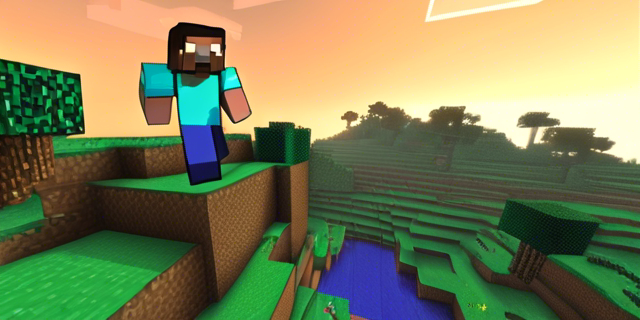
Exploration Elements
Minecraft’s exploration elements provide an exciting and rewarding gameplay experience. From discovering hidden caves and dungeons to encountering various biomes and structures, there is always something new to uncover. The sense of exploration and the thrill of stumbling upon rare resources or encountering dangerous mobs add an element of surprise and adventure to the game.
“Minecraft’s gameplay mechanics truly set it apart from other games in the industry. The combination of an open-world sandbox environment, a robust crafting system, and captivating exploration elements make for an addictive and endlessly enjoyable experience.” – GamingReviewMag.
If we were to compare these unique features with other popular games, we can see clear contrasts:
GameGameplay Mechanics
Minecraft Open-world sandbox, crafting system, exploration
Call of Duty: Warzone First-person shooter, battle royale, realistic graphics
The Legend of Zelda: Breath of the Wild Open-world adventure, puzzles, elemental abilities
As seen in the table above, Minecraft’s gameplay mechanics set it apart by offering an open-world sandbox environment, a unique crafting system, and engaging exploration elements. These features contribute to the game’s enduring popularity and appeal to a wide range of players.
Minecraft’s Impact on Gaming Culture
Minecraft has had a profound impact on the gaming culture, revolutionizing the industry and influencing various aspects of gaming. Its unique gameplay mechanics and endless creative possibilities have captured the imagination of millions of players worldwide, making it a cultural phenomenon.
The Rise of YouTube Gaming Channels
One of the significant aspects of Minecraft’s impact is the rise of YouTube gaming channels dedicated solely to Minecraft content. Popular YouTubers, such as PewDiePie and DanTDM, have amassed millions of subscribers by creating entertaining Minecraft videos. These channels not only showcase gameplay but also demonstrate the creativity and building skills of players, inspiring a new generation of content creators.
“Minecraft has become a platform for creativity and self-expression, allowing players to showcase their unique creations and imaginative worlds to a global audience.” – PewDiePie.
Educational Applications of Minecraft
Beyond its entertainment value, Minecraft has also made its way into classrooms worldwide. Students have leveraged the block-based building mechanics and open-world environment of the game to teach subjects ranging from STEM (science, technology, engineering, and mathematics) to history and literature. Minecraft Education Edition provides educators with a platform to engage students in interactive learning experiences and foster creativity.
The Influence on Game Development
Minecraft’s success and popularity have influenced game developers. Many games now incorporate elements inspired by Minecraft’s open-world exploration, crafting mechanics, and player-driven narratives. Titles such as Terraria and Roblox embrace community-oriented experiences and gameplay elements that have a significant impact on them.
Minecraft’s influence can also be seen in the increasing popularity of sandbox-style games, where players have the freedom to create and explore vast virtual worlds. This shift in game design philosophy has changed players’ expectations, paving the way for innovative and immersive experiences in the gaming industry.
Minecraft’s Impact on Gaming Culture – A Summary
Minecraft significantly influences gaming culture. Its influence is evident in the rise of YouTube gaming channels dedicated to Minecraft, the educational applications of the game in classrooms, and the lasting impact it has had on game development. By bridging the gap between gaming and creativity, Minecraft has shaped the way players interact with and perceive video games.
Minecraft’s Evolution and Major Updates
Since its inception, Minecraft has undergone a remarkable evolution through a series of major updates. These updates have cemented Minecraft’s position as one of the most popular and enduring games in the gaming industry. Each update introduces new features, biomes, mobs, and gameplay improvements that enhance the immersive experience Minecraft provides for players.
One of the significant updates in Minecraft’s evolution was the introduction of the Adventure Update. Released in 2011, this update introduced several groundbreaking features like NPCs (Non-Player Characters), strongholds, and abandoned mineshafts. It also introduced the popular Endermen, a mob that added a new layer of challenge and excitement to the game.
The Aquatic Update, released in NUM0, was a noteworthy update. This update focused on expanding Minecraft’s underwater world with the addition of new underwater biomes, such as ocean ruins and coral reefs. It also introduced new mobs like dolphins and turtles, providing players with more opportunities for exploration and interaction in the vast ocean depths.
Over the years, Minecraft’s major updates have continuously brought innovation and excitement to the game. From the Nether Update, that revamped the hellish dimension of the Nether, to the Caves and Cliffs Update which introduced breathtaking underground caves and majestic mountain ranges, each update breathes new life into the Minecraft universe and keeps players engaged and wanting more.
“Minecraft’s evolution through major updates has been nothing short of incredible. It’s amazing to see how the game has grown and transformed, offering players endless possibilities and new experiences with each update.” – Minecraft player.
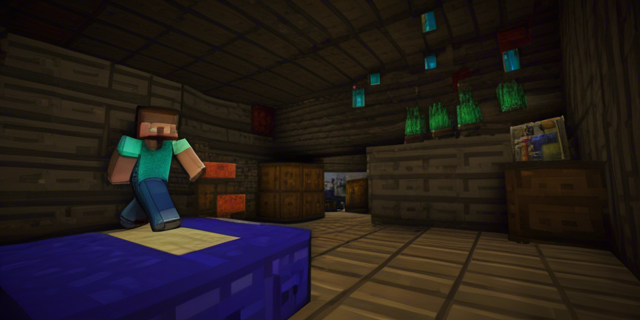
Let’s take a closer look at the major updates that have shaped Minecraft’s evolution:
Update NameRelease YearKey Features
Adventure Update 2011 NPCs, strongholds, abandoned mineshafts, Endermenbest
Aquatic Update 2018 Underwater biomes, ocean ruins, coral reefs, dolphins, turtles
Nether Update 2020 Revamped Nether dimension, new biomes, piggins, Nephrite
Caves and Cliffs Update 2021 (ongoing) Expanded underground caves, towering mountains, new cave biomes
Minecraft in Popular Culture
Minecraft’s influence extends far beyond the gaming world, permeating popular culture with its unique and creative gameplay. From references in movies and TV shows to the proliferation of Minecraft-themed merchandise, the game has become a cultural phenomenon and a recognizable icon in today’s society.
One of the earliest and most notable references to Minecraft in popular culture can be found in the hit TV show “South Park.” In the episode titled “Informative Murder Porn,” Minecraft is satirized as “Minecraft: A Beautiful Today,” showcasing the game’s widespread recognition and cultural impact.
“Minecraft: A Beautiful Today is a game where you can walk around and dig and build things all day long… in a peaceful and creative environment. I think it’s full of spooky ghosts and monsters or something… it’s just not visible to the naked eye.” – Quote from the “South Park” episode “Informative Murder Porn”
Minecraft has also made its way onto the big screen. In the 2019 film “Pokémon Detective Pikachu,” a Minecraft-themed café can be seen, showcasing the game’s presence in the movie and its recognition among mainstream audiences.
The game’s popularity has led to a plethora of Minecraft-themed merchandise, from clothing and accessories to toys and home decor. Minecraft-themed LEGO sets, for example, have become incredibly popular among fans of all ages, further cementing the game’s place in popular culture.
Minecraft in Popular Culture – Movies, TV Shows, and Merchandise
Movie/TV ShowYearReference to Minecraft
“South Park: The Informative Murder Porn” 2013 Satirizes Minecraft as “Minecraft: A Beautiful Today”
“Pokémon Detective Pikachu” 2019 Features a Minecraft-themed café
These examples only scratch the surface of Minecraft’s presence in popular culture. The game’s unique aesthetic, creativity, and widespread appeal have solidified its position as an iconic and influential force in today’s entertainment landscape.
Minecraft’s Enduring Legacy
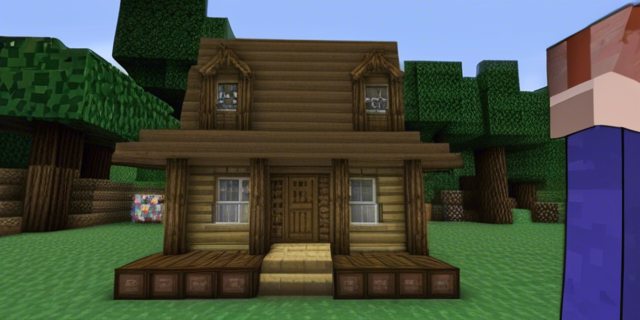
Even after more than a decade since its release, Minecraft continues to leave an indelible mark on the gaming industry and popular culture. Its legacy is a testament to the game’s unparalleled success and long-lasting impact.
Minecraft’s enduring legacy is rooted in its ongoing relevance. The game has remained incredibly popular over the years, attracting new players and captivating existing ones. Its open-world sandbox environment and limitless creative potential have ensured its staying power in an ever-evolving gaming landscape.
“Minecraft is not a game; it’s a lifestyle.” – Notch, Creator of Minecraft
The game’s large active community is another testament to its enduring legacy. Minecraft has fostered a vibrant online community, with players sharing their creations, collaborating on projects, and even creating their own modifications, known as mods. This strong sense of community has fueled the game’s longevity and kept players engaged and connected.
Furthermore, the continued support from Mojang, the company behind Minecraft, further solidifies its legacy. Regular updates and feature additions have kept the game fresh and exciting, ensuring that players always have something new to explore and discover. The dedication of Mojang to the game and its player base reflects the lasting impact of Minecraft.
To truly understand the impact of Minecraft, let’s take a closer look at some key statistics:
StatisticValue
Total copies sold 200 million+
Total registered players Over 126 million
Active monthly players More than 126 million
Total player-created mods Thousands
Total YouTube videos about Minecraft Over 10 billion
These numbers speak for themselves, demonstrating the widespread reach and influence of Minecraft. From its humble beginnings as an indie game, Minecraft has become a global phenomenon.
In conclusion, Minecraft’s legacy is one of remarkable longevity, ongoing relevance, and a dedicated community. Its impact on gaming culture and popular culture as a whole cannot be underestimated. As the game continues to evolve and inspire, its enduring legacy will undoubtedly shape the gaming landscape for years to come.
Conclusion
In conclusion, Minecraft is not just a game, but a cultural phenomenon that has captivated millions of players around the world. The origin story of Minecraft, starting with its creation by Markus Persson and the establishment of Mojang, sets the stage for its incredible journey.
From its inception and development to the alpha and beta phases, Minecraft has evolved into an immersive and groundbreaking experience. The release of the game marked the beginning of its immediate success, propelling it to become one of the most popular and influential titles in gaming history.
One of the key factors behind Minecraft’s enduring legacy is its innovative gameplay mechanics. The open-world sandbox environment, combined with the unique crafting system and exploration elements, has allowed players to unleash their creativity and shape their virtual worlds.
Furthermore, the impact of Minecraft extends beyond gaming. Its influence on popular culture, such as references in movies, TV shows, and various merchandise, demonstrates its widespread recognition and cultural significance. Minecraft has also been praised for its educational applications, fostering creativity, problem-solving skills, and collaborative learning.
In summary, Minecraft’s creation and ongoing evolution have left an indelible mark on the gaming landscape. Its enduring legacy, supported by the dedicated community and continuous updates from Mojang, ensures that Minecraft will remain a beloved and influential game for years to come.
FAQ
How was Minecraft created?
Minecraft was created by Markus Persson, also known as Notch, and developed by his company Mojang. The idea for the game originated in May 2009, and development began shortly after. It was initially released as an alpha version in 2010.
Who is Markus Persson?
Markus Persson, also known as Notch, is the creator of Minecraft. He is a Swedish video game designer and programmer who founded the company Mojang. He was actively involved in the development of Minecraft until September 2014.
What are the early years of Minecraft?
The early years of Minecraft refer to the period when the game was first conceptualized and developed. It started with Markus Persson working on the game independently and later forming his company, Mojang. During this time, the game began gaining popularity among players.
How did Minecraft evolve over the years?
Minecraft has evolved significantly since its initial release. Through major updates and patches, new features, biomes, and mobs have been introduced, improving gameplay and offering new experiences to players. The constant evolution of the game has contributed to its enduring popularity.
What is Minecraft’s impact on gaming culture?
Minecraft has had a significant impact on gaming culture. It pioneered the concept of open-world sandbox games, inspiring countless similar titles. Minecraft also popularized the creation of YouTube gaming channels, where players showcase their gameplay and creations, contributing to the rise of gaming content on the platform.
How has Minecraft influenced popular culture?
Minecraft has made its mark in popular culture through various references and appearances in movies, TV shows, and even merchandise. The game’s iconic characters and blocky aesthetic have become recognizable symbols, appealing to both gamers and non-gamers alike.
Also read this- Best version of minecraft
